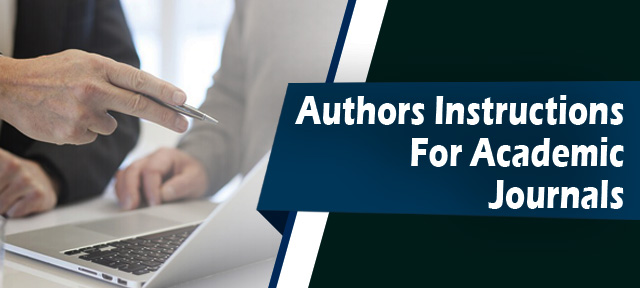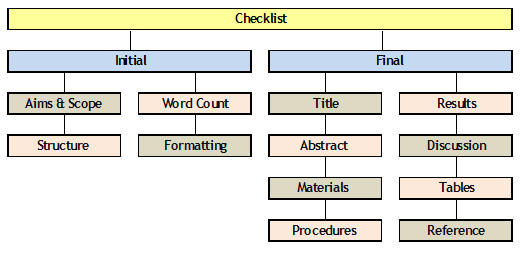Failure to follow the Instructions for Authors is the most common explanation for publications being rejected from journals, besides Aims and Scope. Failure to comply with Initial Checks will lead to the Desk Rejection of the Journal.

What are the Types of Articles?
- Regular Articles: They should explain new and carefully confirmed results, as well as experimental methods that are detailed enough for others to validate the work.
- Review Articles: Reviews should be brief, no more than 4-6 printed pages in length (about 12 to 18 manuscript pages). Review Articles are subjected to peer review.
- Short Communications: Short Communication is used to document the outcomes of small inquiries or to describe new models or theories, as well as novel approaches, techniques, or apparatus. Short communications range in length from 2 to 4 printed pages (roughly 6 to 12 manuscript pages). Two figures and one table are the maximum numbers of figures and tables allowed in a short communication. They should present a comprehensive report with a narrower reach than full-length reports.
What are the steps to be followed in Academic Journal before Submission?
- Find the Journal’s Website
- Is this Journal right for my Research?
- Study the Authors Instruction
- Determine the Structure
- Check Instruction for Submissions before starting the Writing
Initial Checklist
- Compliance with Aims & Scope – Scan Aim, Scope, Timeline, Topics
- Compliance with Author’s Guidelines
- Structure of Article
- Word Count
- Formatting
Final Checklist
- The title should be short term that summarises the paper’s material.
- The abstract should be concise and self-explanatory. Word Count – 100 to 200 words.
- Materials and Procedures should be detailed enough to allow for the replication of Only genuinely new procedures should be outlined in detail. Previously published procedures should be referenced. Trade names should be capitalized, and the manufacturer’s name and address should be used.
- Results should be explained in a clear and precise manner. When explaining findings from the authors’ studies, the results should be written in the past tense.
- Discussion should interpret the findings of the topic. At the end of the article, state the conclusions in a few sentences. Subheadings can be included in the Results and Discussion sections, and all sections can be merged when necessary.
- Tables should be as small as possible and built as simply as possible. Tables, like headings and footnotes, must be typed double-spaced throughout. Each table should be on its list, numbered sequentially in Arabic numerals, and accompanied by a heading and legend. Without referring to the document, tables should be self-explanatory.
- A Reference marked by an author’s name in the text should be preceded by the reference’s date in parentheses.
Additional documents
- Cover Letter
- An author biography – Contact Information
- A list of previous publications
Finally, include any processing or reviewing fees that may be needed at this time with your submission.
Conclusion
To publish smoothly in a Journal, follow the general instructions for the Author. Check carefully Article Types, Manuscript Formatting, Guidelines, and Submission Guidelines before submitting to avoid Rejection.


